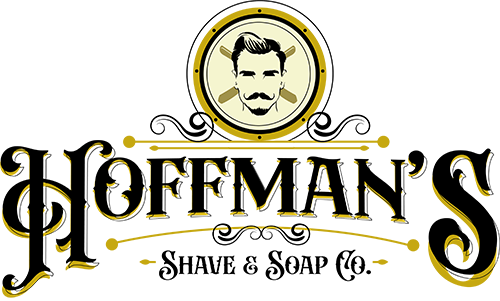Shaving, beyond its daily routine, has a rich history that mirrors the cultural shifts and grooming preferences of civilizations across time. This journey takes us from the ancient practices of Rome, Egypt, and Greece to the contemporary personalized rituals of the 21st century.
In this exploration, we will learn about the origins of shaving, dissecting its historical significance, and examining its evolution through different eras.
Where did the Shaving Originate?
The history of shaving dates to the prehistoric era. To get rid of facial and body hair, people probably used sharpened stones or shells for a variety of purposes, like lowering their vulnerability to parasites, improving their look, or boosting the potency of face paint. Shaving customs changed as civilizations developed. In the sections to follow, we shall learn about the detailed cultural and historic timeline of the origins and development of shaving.
Ancient Rome
The history of shaving can be traced back to ancient civilizations, with the practice gaining prominence in Ancient Rome. Romans considered a clean-shaven face a sign of civilization and high social status. They used various tools for shaving, including bronze razors with wooden or ivory handles. The act of shaving was often accompanied by the application of oils and creams to soften the beard before removal.
Ancient Egypt
In Ancient Egypt, personal grooming was highly valued, and the elite took great care in maintaining a hairless appearance. Egyptians utilized a variety of tools for shaving, ranging from flint blades to copper razors. Additionally, they developed a concoction of substances like honey and oil to soothe the skin post-shaving, demonstrating an early understanding of skincare in conjunction with the act of removing facial hair.
Ancient Greece
Ancient Greece also embraced the tradition of shaving, associating a clean-shaven face with youth and vitality. Greek men used a combination of bronze razors and pumice stones to achieve a smooth complexion. The emphasis on physical prowess in Greek society further fueled the desire for a hair-free appearance among men.
Modern Times
As civilizations evolved, so did the techniques and tools for shaving. The Middle Ages saw the prevalence of beards, but by the 18th century, a shift towards a cleaner-shaven look emerged.

Beards in the Middle Ages
During the Middle Ages, beards became a symbol of masculinity, and shaving was less common among men. Beards were often grown long and styled to convey a sense of authority or wisdom. The Church also played a role in shaping perceptions of facial hair, with clergy members often sporting well-groomed beards.
18th Century Shaving
The 18th century witnessed a resurgence of interest in facial grooming. Wigs and powdered hairstyles were fashionable, leading men to adopt a cleaner-shaven look to complement their elaborate coiffures. Straight razors, made from steel, became popular during this era, and the art of shaving began to take on a more refined and precise form.
Shaving in the 19th Century
The 19th century marked significant advancements in shaving technology. The safety razor, patented by King C. Gillette in 1904, revolutionized the industry. This invention made shaving more accessible to the masses, as it reduced the likelihood of nicks and cuts compared to traditional straight razors.
20th Century Shaving
The 20th century brought further innovations with the introduction of electric razors. The invention of the electric razor is attributed to Jacob Schick, who patented his design in 1928. This provided an alternative to traditional wet shaving and gained popularity for its convenience and speed.
21st Century Shaving
In the 21st century, shaving has become a highly personalized and technologically advanced ritual. With the advent of multi-blade razors, ergonomic handles, and cutting-edge shaving creams, individuals have more choices than ever for achieving a smooth shave. The resurgence of interest in traditional wet shaving has also led to a revival of straight razors and artisanal shaving soaps.
Conclusion
In wrapping up, the journey through the history of shaving sheds light on how grooming practices have evolved over time, shaping and shaped by cultural shifts. From the simpler routines of ancient civilizations to the more modern and personalized approaches of today, shaving has always been more than just a daily task. It's a reflection of societal values and individual choices.
The various eras and methods we've explored highlight the fluidity of beauty standards and the ways in which personal appearance connects with broader cultural dynamics. As we glance back at the history of shaving, it becomes clear that this routine, though simple, is deeply intertwined with the story of human identity, threading through tradition, innovation, and individual expression.

FAQs
What is the history of razors and shaving?
The history of razors and shaving dates to ancient civilizations such as Rome, Egypt, and Greece. Over the centuries, the tools and techniques for shaving evolved, with innovations like the safety razor and electric razor shaping the modern landscape of personal grooming.
How did people shave before electric razors?
Before electric razors, people used various tools for shaving, including bronze razors, flint blades, and pumice stones. The introduction of the safety razor in the 20th century provided a safer and more accessible alternative to traditional straight razors.
What is the original traditional method of shaving?
The original traditional method of shaving involved using a straight razor, often made of steel, along with shaving creams or oils to soften the beard. This method required precision and skill, and it was prevalent before the advent of safety razors and electric razors.
What era did shaving become popular?
Shaving became popular in different eras for various reasons. In Ancient Rome, a clean-shaven face was associated with civilization and social status. The 18th century saw a resurgence of interest in shaving due to fashionable hairstyles, while the 20th century brought mass accessibility with the invention of the safety razor. In the 21st century, shaving has become a highly individualized and technologically advanced practice.

